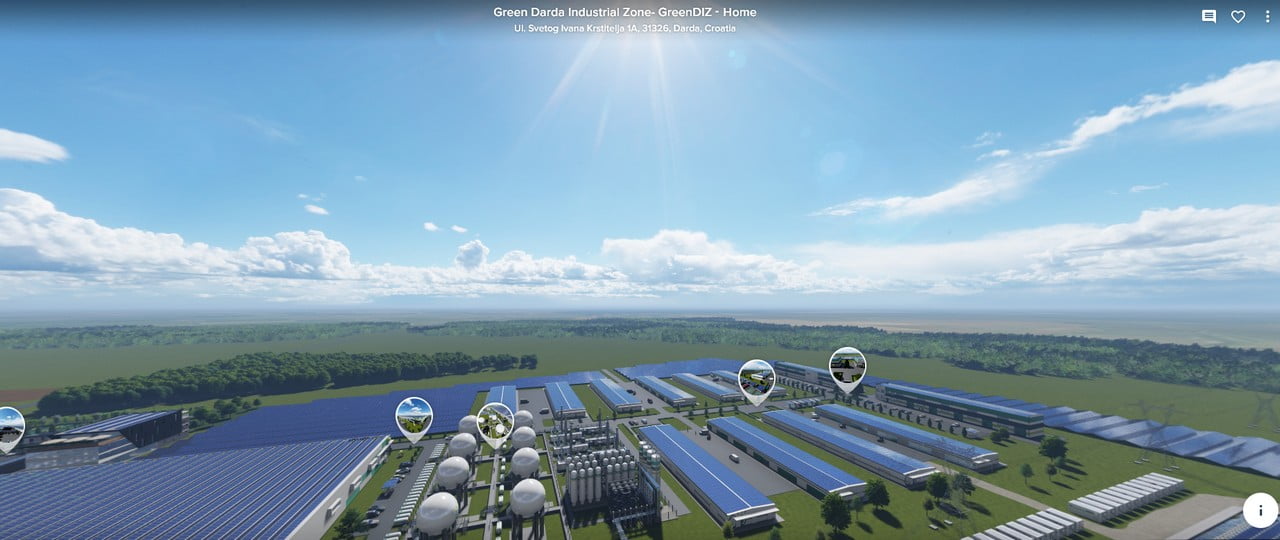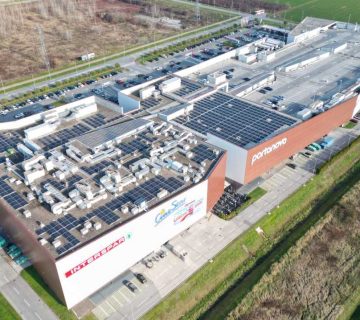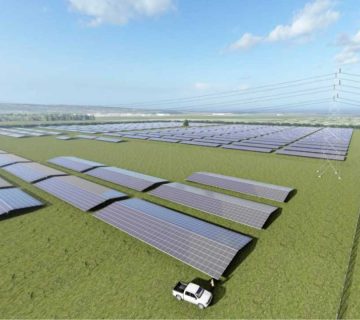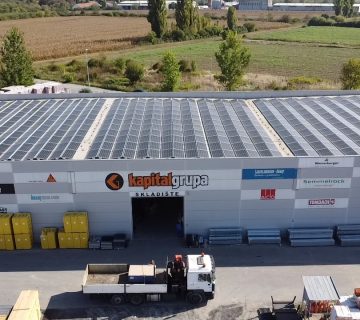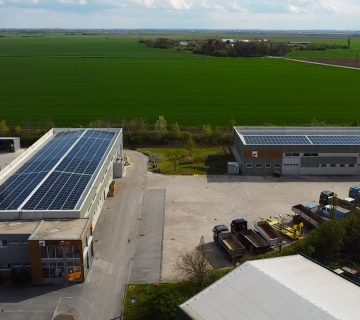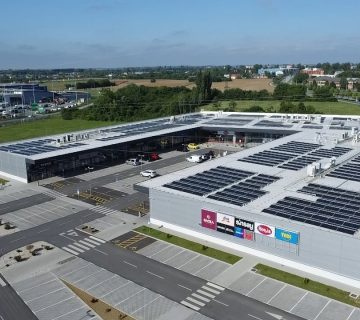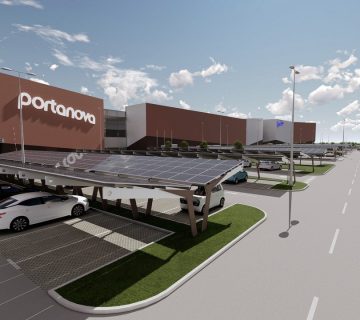About the GreenDIZ Project:
The concept of the first green industrial zone (ever), spanning an area of 30 hectares, has been developed and is owned by the Solaris Pons Group (SPG). SPG consists of several companies, with the main company being Solaris Pons LLC, founded in 2013 and active in the solar energy market through a wide range of services offered to clients in both the public and private sectors. In addition to standard solar energy project development, the company pushes boundaries by creating innovative approaches to project implementation, such as the project launched in 2019 through an on-site Power Purchase Agreement (PPA) scheme – the first of its kind in Croatia. In its early years, the company was very active in national feed-in tariff auctions and, after developing around 40% of Croatia’s solar capacities, decided to enter the electricity supply market—a logical step considering its vast client base across the country.
More about the GreenDIZ Project:
The Green Darda industrial zone is a concept of an energy self-sufficient industrial zone where SPG operates its energy distribution and supply business, focusing exclusively on solar energy (integrated, non-integrated, and floating types) and hydrogen (produced from surplus solar energy and rainwater collected in an artificial lake). Hydrogen will be used as a mechanism for seasonal energy storage and for providing ancillary services (balancing energy) to the transmission system operator. Plans also include the export of large quantities of hydrogen. Instead of charging for energy and space (rent), SPG will be a part of the companies operating in battery production (Giga Croatia), 3D printing, crypto mining, and more. GreenDIZ will partner with the Faculty of Electrical Engineering, Computer Science and Information Technology in Osijek to organize field visits for students, professors, and researchers, as well as student internships. The goal of GreenDIZ is to revitalize the economy by creating opportunities for several hundred new jobs and launching the “5.0 industrial revolution” powered by locally produced green energy.
Distances from major cities:
• 12 km from Osijek (the fourth-largest city in Croatia, administrative center of Osijek-Baranja County)
• 280 km from Zagreb (capital of Croatia)
• 250 km from Budapest (Hungary)
• 250 km from Belgrade (Serbia)
• 290 km from Sarajevo (Bosnia and Herzegovina)
• 420 km from Ljubljana (Slovenia)
• 460 km from Vienna (Austria)
Logistics:
• River transport: 12 km from the Drava river port in Osijek (annual handling capacity of 200,000 tons), 50 km from the Danube river port in Vukovar (annual handling capacity of 500,000 tons)
• Road transport: Two Pan-European road corridors pass through the region. Corridor X runs along the Salzburg–Ljubljana–Zagreb–Belgrade–Skopje–Thessaloniki route. Corridor Vc connects Budapest, Osijek, Sarajevo, and Ploče (a maritime cargo port)
• Air transport: 12 km from Osijek Airport (Osijek Airport is the only airport in Croatia where cargo is the primary strategic focus)
V I D E O
360° PANORAMA


